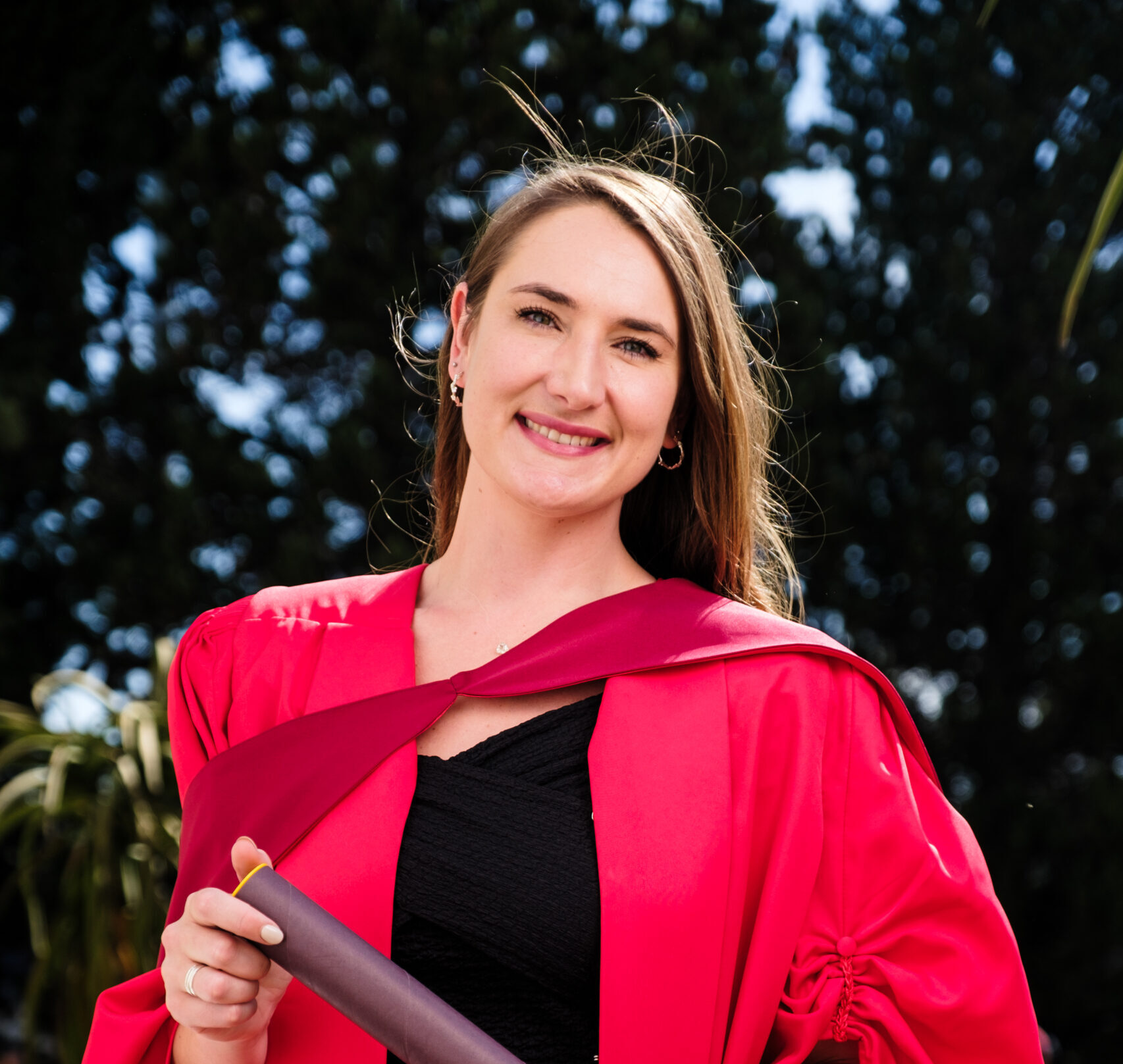SU’s Faculty of Science awards four joint international degrees

Stellenbosch University’s Faculty of Science this week awarded four joint PhD degrees with universities in the United Kingdom, Germany, France, and Italy in the fields of chemistry, physics, microbiology, and zoology.
A joint degree means that the students were co-supervised by a researcher from both universities, spending time at each institution to work on their research. Based on an agreement between the two universities, the degree is then awarded by both institutions.
Dr Dina Miora was awarded a PhD in physics from SU and the Friedrich-Schiller University in Jena, Germany; Dr Wessel Myburgh a PhD in microbiology from SU and the University of Padova, Italy; Dr Gestél Kuyler a PhD in polymer science and molecular pharmacology from SU and Coventry University in the United Kingdom; and Dr Laurie Araspin a PhD in Botany and Zoology from SU and the Muséum national d’Histoire naturelle (MNHN) in France.
Altogether 37 PhD, 75 MSc, and nine BScHonours degrees were awarded at the graduation ceremony on 26 April 2025 at the Coetzenburg Centre in Stellenbosch.
Myburgh says his research benefited immensely from the international exposure: “The expertise of the two groups complemented each other perfectly. In my case, Prof. Lorenzo Favaro’s research group has experience in converting waste to energy using microbial technologies based on anaerobic digestion. They also have a wealth of knowledge in bioplastic production. Both these fields were lacking in our group. We, on the other hand, have a very strong background in recombinant yeast expression systems for fungal hydrolase production. I would not have been able to make so much progress in my PhD if it was done at either of the institutions alone.”
Kuyler says her experience was both transformative and challenging: “Pursuing a dual-award PhD with the goal of bridging the disciplines of Polymer Science and Molecular Pharmacology was a daunting task, especially considering my limited prior knowledge in the latter. I am immensely thankful for this invaluable opportunity that has enabled me to expand my knowledge and develop into a versatile, multidisciplinary scientist.”
Araspin’s study leader, Prof. John Measey, says the joint degree came about as an extension of an ongoing collaboration between himself and Dr Anthony Harrell at the MNHN in France: “We were interested in finding out extreme differences between populations of frogs that live natively in South Africa and invasive populations in France. The biggest advantage was certainly for the student to have spent time in both countries, working on a topic important to both countries.” Measey is a senior researcher at the Centre for Invasion Biology at SU.
Miora, who is also an alumnus of the University of Antananarivo in Madagascar, says the experience in Germany gave her the opportunity to work in an advanced and fully equipped laboratory: “It was rather quick to fix any work-related problems given the extensive human and materials resources at hand. At SU, each student project is quite different, even though we are all working in photonics. While it takes longer to solve an issue, because only my supervisor fully understands the problem, it also provides us with valuable skills to solve most problems by ourselves. In the end, being able to both work in a team and independently are valuable career skills,” she says.
Despite having to cope with new languages and cultures, as well as the significant additional administrative burden of navigating the systems and requirements of another university, the students agree that it was a worthwhile and life-changing experience.
Prof. Louise Warnich, Dean of the Faculty of Science at SU, says international partnerships and joint degrees are very important for a research-intensive faculty: “It strengthens our ability to tackle important issues by joining forces with international specialists. It also offers an opportunity for our PhD students to become part of international networks early in their careers, and to gain access to specialist knowledge and facilities.”
Both Kuyler and Myburgh’s research also led to the registration of international patents and the establishment of spin-out companies Nanosene and Urobo Biotech. Miora is currently a postdoctoral fellow and image analyst at the Medical Research Council (MRC) Laboratory of Molecular Biology (LMB) in Cambridge, England.
Photo credit: Stefan Els
